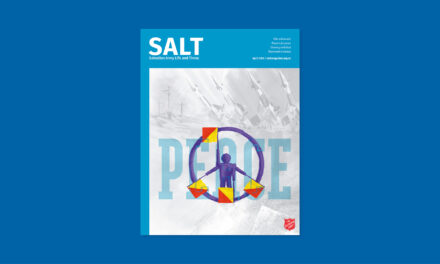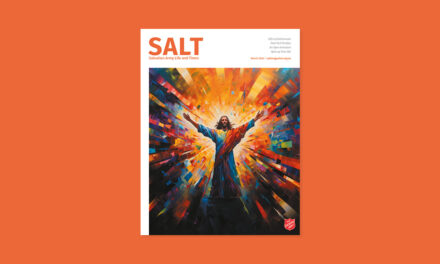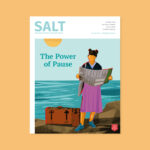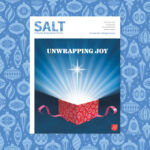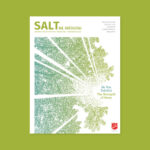
Te Rā o Waitangi
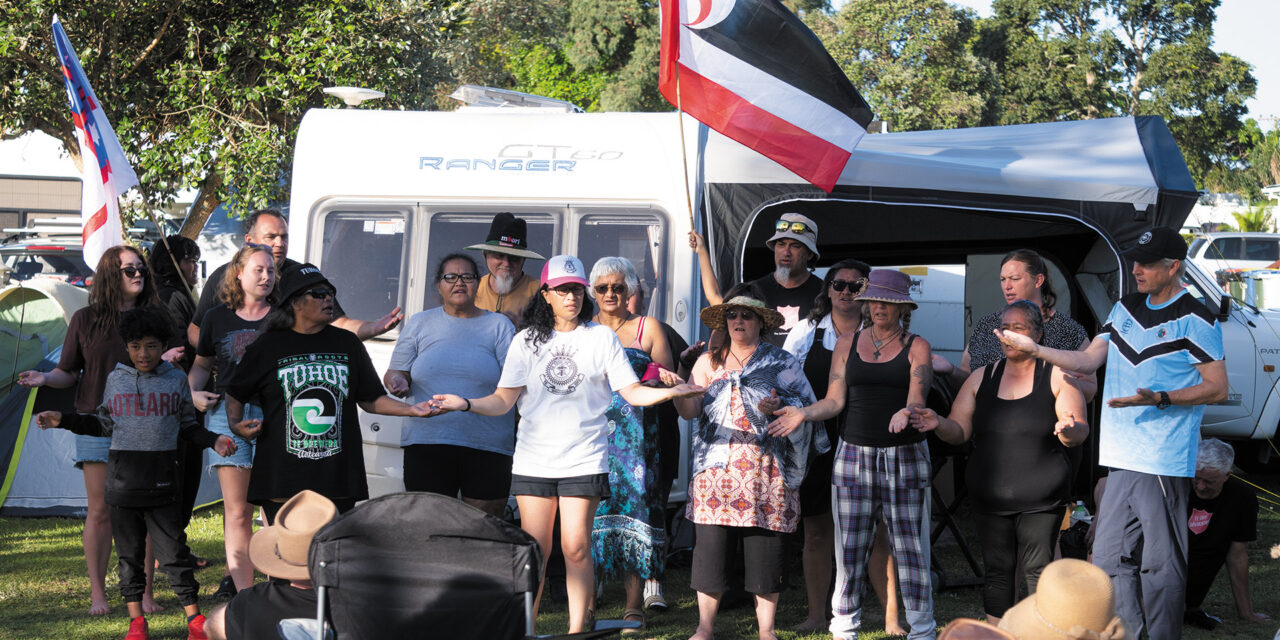
For many years, The Salvation Army has been fortunate to attend and participate in the celebrations and commemorations at the Waitangi Treaty Grounds on February 6. This year, Richard Kerr-Bell, tumu whakarae of The Salvation Army National Rūnanga Aotearoa, shares his experience of this significant invitation.
Ka mihi ki ngā hau kainga o Waitangi, tēnā rā koutou, ōku rangatira o te wā. A special acknowledgment of our hosts, the people of Waitangi, our esteemed leaders for the Waitangi Day Celebrations.
Preparations for Waitangi and the desire of many people of Te Ope Whakaora (The Salvation Army) to participate in the commemorative events were evident early on. Corps and groups responded from Ōtautahi (Christchurch), Rotorua, Kirikiriroa (Hamilton) and many places up and down the motu (land). There was an attraction this year to support Māori in a show of unity to the Government, who had collectively expressed the intent to diminish tino rangatiratanga (self-determination) through many avenues, not least in re-writing the understanding of Te Tiriti o Waitangi (The Treaty of Waitangi). And so reports of the preparations and emails remained steady, with plans to ensure the many Salvationists arrived safely and could spend the four days over Waitangi with a space to sleep.
Journeying to the grounds
Having left my accommodation and flights until the last minute, I arrived at Tāmaki Mākarau (Auckland) on Saturday afternoon and drove carefully northward.
I was surprised by the gentle entry into Te Haumi which precedes Paihia, and I was grateful for this as my father is buried in the RSA urupā (cemetery) at the top of the hill that descends into Paihia. It was a wonderful hour spent with him.
Moving through Paihia on my way to the campsite of many Te Ope Whakaora pilgrims was a joy, as was meeting new people from Kirikiriroa and Ōtautahi as well as the cadet crew from Booth College of Mission (BCM) and the many wonderful people of Te Ope Whakaora.
On Sunday morning, I ate breakfast at a local café with Tama Iti and his whānau (family). It is always humbling to see larger-than-life personalities—and in this case, strong, unapologetic advocates for Māori—participate in the day-to-day ritual of whānau and parakuihi (breakfast). Arriving at the campsite was a different experience from the day before. There were hundreds, if not thousands, of people walking, driving, singing and waving flags of He Whakaputanga (1835 Māori Declaration of Independence) and tino rangatiratanga from every possible vantage point—on cars, front lawns, in hands, tied around necks, on caravans and houses.
Having made my way to the campsite, we left to cross the bridge to Waitangi Marae grounds to join in the pōwhiri (formal welcome) for the Kingitanga with Kīngi Tūheitia Pōtatau Te Wherowhero VII, Te Pāti Māori and Rātana. The time set down was 4pm and given the size of the groups approaching te Tiriti grounds we became somewhat dispersed as many gathered onto the designated waharoa (entrance). After the haka pōwhiri and karanga (call), we began moving towards the entrance to the whare rūnanga (meeting house), led by the Rātana brass band.
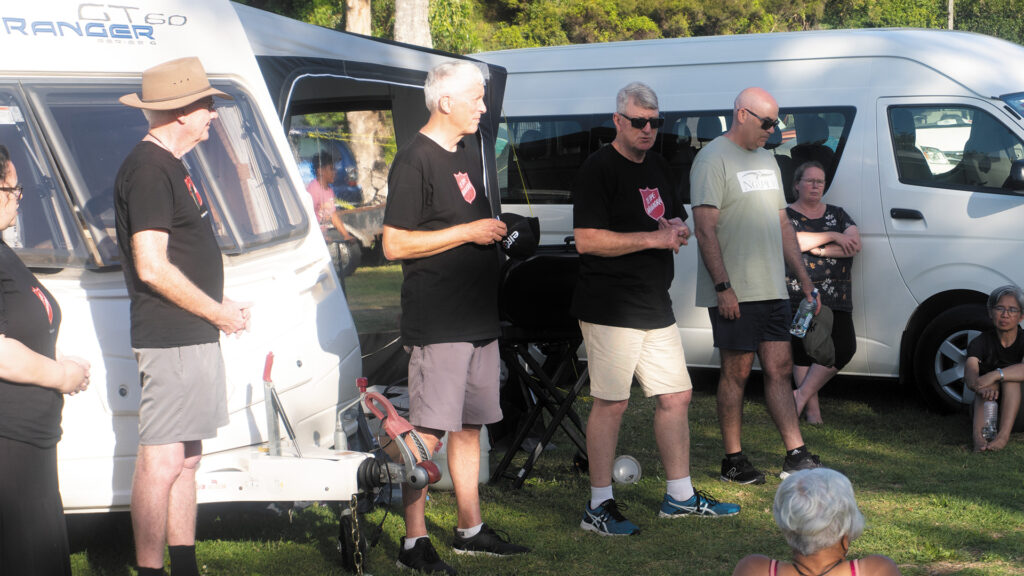
Determined kōrero
Despite being ready and prepared to speak on behalf of our Army, given the size of the taumata (seating of the speakers) on both sides and the mana of the speakers, it was not necessary. The proceedings began with three speakers from Ngāpuhi and then at least 15 from the manuhiri (guests). The first kaikōrero (speaker) spoke with gusto and energy, and set the scene for a beautiful consistent kōrero across both taumata. The messages of peace, adherence to tikanga (Māori protocol), presence and dialogue to work through raruraru (problems) and mamae (pain) were strong. There were challenges and expressions of determination and unity. I believe the reason for the sense of calm and wairua pai (good spirit) was Bishop Kito’s (co-chair of the Rūnanga) leading, with karakia (prayer)—gently and humbly—as he expressed the mana (authority) of his role at this hui (meeting) in the presence of his tūpuna (ancestors).
Having taken part in the hariru (handshakes), we were free to disperse and take in the enormity of the occasion and the beauty of te Ipipiri, the Bay of Islands.
Monday was largely a time for people to experience Waitangi with all of the local foods and historical and sacred sites; home to many of the first missionaries to Aotearoa of Anglican, Presbyterian, Methodist and Catholic traditions alike. With regard to tāngata Tiriti (people of the Treaty), these were one of the early sights of intercultural interaction.
Connected to tūpuna
Being in Te Tai Tokerau (Northland) held a lot of meaning for me. The landscape comes alive and the memories of many of my whānau and my childhood are embedded there. It is the site of many tūpuna, and of our urupā, Rōiho, located below Pākenae Marae. The marae looks up to Whiria Maunga (Mount Whiria), which is of great repute and historical significance in Rahiri and Ngāpuhi folklore. It is a short distance from there to our main marae of Aotea, over the hill from Omapere. The most significant sight here are the sandhills on the north side (Niniwa/Niua) of the Hokianga Harbour entrance, and to the left of the sandhills is where my father grew up, in Rangi Point.
I took the time to visit my aunty in Kohukohu and my grandfather buried at the Kohukohu urupā, then went on the Kohura II ferry (named in a competition by one of my uncles, Kohura, to show the two connecting towns, Kohukohu and Rawene).
Returning to the camp in the evening was a real pleasure, sharing kai (food), kōrero (conversation), waiata (songs) and karakia together until the sun went down. We prepared to be up early for the 5am dawn service, led by Bishop Kito.
Te Rā o Waitangi
Woken by my alarm at 2.15am, with my bags packed and a breakfast of porridge, I left Kerikeri for the dark gravel backroad of Haruru Falls through the golf course and into a carpark just above Te Whare Runanga. Waiting with Walter (Tāmaki Te Ope Whakaora whānau) and a few others around 3am, we accompanied our pīhopa (bishop) onto the marae in preparation for the day’s events.
It was a very special morning; the stillness of the pre-dawn, the karakia, the deeply reflective words of the speakers, the waiata.
The service concluded with Territorial Commander Commissioner Mark Campbell giving the benediction (blessing). During this sacred time, the spectacular sunrise gave voice to God’s love and presence.
E te Atua aroha, e whakamoemiti, e whakawhetai e inoi ana mātou ki a koe mo ēnei rā papai rawa. God of love, we praise you and honour you as we lift our prayers to you on this auspicious day.

